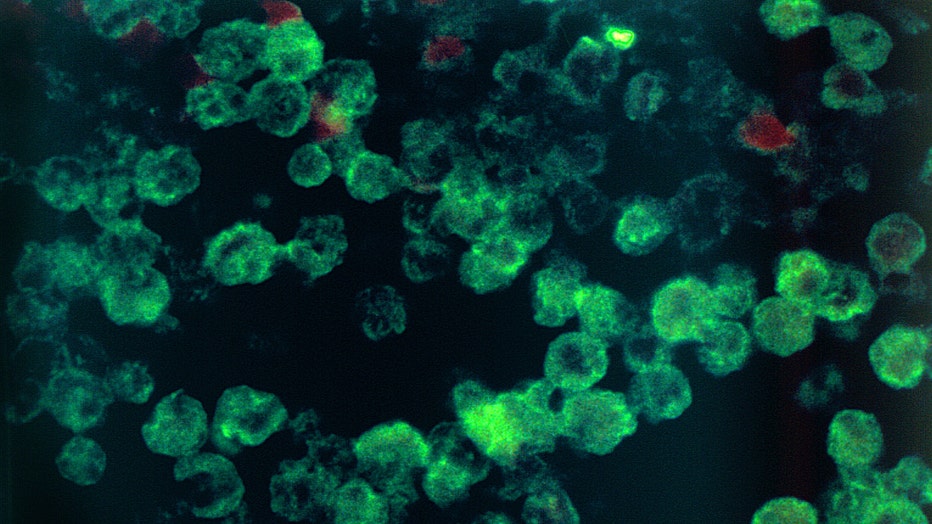Infection
‘Brain-eating amoeba’ case suspected in Arizona: Here’s what to know
Officials said while the case is not confirmed to be caused by the amoeba at this time, an investigation is ongoing.
Here’s what to know about the situation.
“The investigation into possible exposures and exposure locations is ongoing,” read a portion of the statement.
Under a magnification of 630X, and implementing a the direct fluorescent antibody (DFA) staining technique, this photomicrograph depicts histopathologic characteristics associated with a case of amebic meningoencephalitis due to Naegleria fowleri par
According to the CDC’s website, the “brain-eating amoeba” is a common name for the Naegleria fowleri amoeba.
The Naegleria fowleri amoeba, according to the CDC, can be found in the following areas:
The amoeba, according to CDC officials, is not found in salt water, like the ocean. It grows best at high temperatures up to 115F (~46C), and can survive for short periods at higher temperatures.
How does it infect humans?
The infection, according to the website, is caused by the amoeba traveling to the brain after entering a human body through the nose. In the brain area, the amoeba destroys brain tissue, and causes swelling and death.
On the Children’s Hospital of Philadelphia’s website, it is stated that initial PAM symptoms appear, on average, five days after infection, but it can range anywhere from one to nine days. The symptoms include:
“The early symptoms of Naegleria fowleri infection are similar to those caused by other more common illnesses, such as bacterial meningitis,” read a portion of the C
- Stiff neck
- Confusion
- Lack of attention to people and surroundings
- Loss of balance
- Seizures
- Hallucinations
According to the Illinois Department of Public Health, PAM cannot be spread from person to person.
According to the Cleveland Clinic’s website, an antifungal medicine called amphotericin B is used as the treatment of choice for PAM or Naegleria fowleri infection. Some cases were also treated with a combination of drugs including amphotericin B, rifampin, fluconazole and miltefosine.
“Even with treatment, most people die from this condition. Coma followed by death usually happens in a week or 10 days after symptoms and signs begin,” read a portion of the website.
“Only four people have survived out of 157 known infected individuals in the United States from 1962 to 2022,” read a portion of the CDC’s website.
According to AZDHS officials, cases of Naegleria fowleri infections are extremely rare, with only 29 infections reported in the U.S. from 2013 to 2022.
Figures from the CDC show there were nine cases of PAM caused by Naegleria fowleri in Arizona from 1962 to 2022.
The first case, according to officials, happened in 2007 in the Lake Havasu area, and the second case, which happened in 2022, involved a Nevada resident who was exposed to the amoeba at Kingman Wash, on the Arizona side of Lake Mead.
What should people do to avoid being infected by the amoeba?
(This website does not provide medical advice. The information provided above are meant to be informative, and nothing on this site should be considered as a substitute for professional medical advice, diagnosis or treatment. If you have concerns about your health, reach out to your primary care doctor or other health care providers. If there is a medical emergency, call 911 immediately.)

